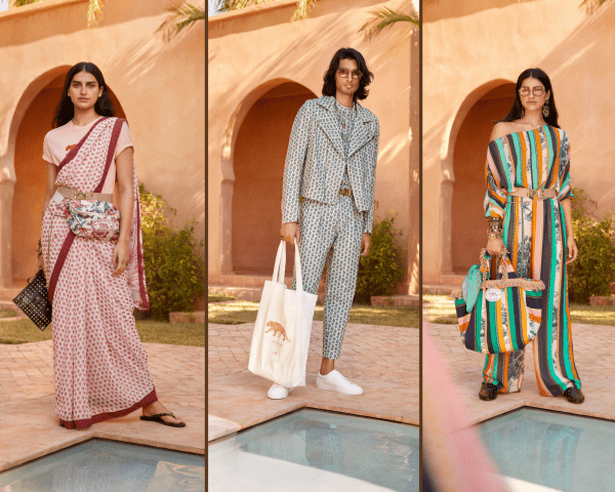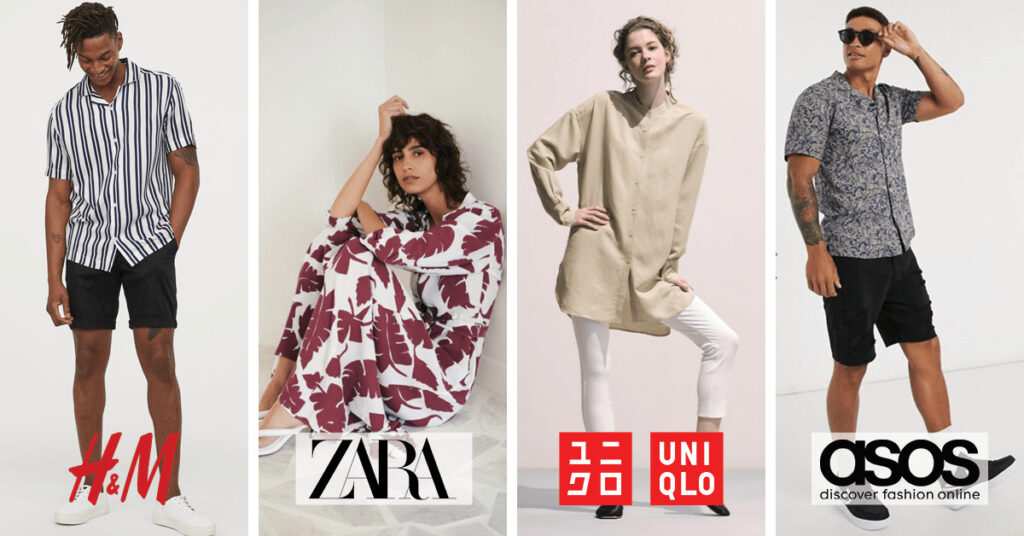Two roads diverged in a wood, and I—
I took the one less travelled by,
And that has made all the difference.
– Robert Frost
One of India’s most noted designers, Sabyasachi Mukherjee launched his collaboration with the Swedish fashion brand, H&M last week, and the social media response to this western-ethnic collaboration has been less than satisfactory.
Sabyasachi Mukherjee is known for his aesthetic Indian designs, elaborate anarkalis, sarees, suits, and a mix of traditional and contemporary gowns. Mukherjee is now on the list of the chosen few fashion brands in the world alongside Versace, and Madonna to have collaborated with the go-to fashion brand of the masses. The combined fashion genius of Sabyasachi and H&M launched their collaboration ‘Wanderlust’ and were out of stock within minutes of the launch.

Despite all the promotions and clean shelves, the collaboration has failed to meet everyone’s expectations. From memes on the design to lengthy speeches on the perils of fast fashion and sustainability, the new collection has offended a lot of people. H&M has been in the news frequently for labour exploitation, fast fashion, and environmental degradation.
The collection was launched online and had a simple and rustic vibe to it. Netizens were disappointed with the costs associated and felt that they were being charged too much for a piece of cloth just because of brand value. The outrage over prices eventually led to talks about sustainable fashion, cancel culture, boycotting of fast fashion brands, and labour exploitation. This issue has once again opened the discussion between socialism and capitalism and the forever diverging rift between them.

From a business point of view, this collaboration works in the best interests of both Sabyasachi and H&M. The pandemic has crippled the world economy and people have lost money and business and are having a very hard time stabilizing their earning. As fashion is a luxury, the fashion sector has suffered a lot since the very first lockdown was imposed in 2020. While many have raised concerns about the hardships and loss of employment and money those local artisans will face because of this collaboration, many journalists and economists pointed out that this business move has achieved the exact opposite by paving a way for the local artisans and tailors to generate revenue and employment.
If this is indeed the case, then why are the millennials and zoomers raising their voices against this collaboration and trying to get it cancelled?
The answer is simple. Sabyasachi’s attempt at making the brand more inclusive for all is appreciated but let’s face it: There isn’t no such thing as a free lunch. We are getting Sabyasachi clothes at a cheaper price than usual but at whose expense? Most high-end luxury brands have never revealed their original designers, craftsmen model, tailoring technique, labour model, etc., so we have absolutely no idea if they are sustainable or not. For a working, middle-class Indian, brands like Sabyasachi or Manish Malhotra have never been known for their affordability.
A wider base of customers can help bridge the affordability gap and even though Sabyasachi is a well-established brand in India, going international is not easy and one needs a helping hand. Through the Wanderlust collection, Sabyasachi is well on its way towards an international consumer base.
But what about sustainable fashion? A steady and fast production of new clothes is akin to cancer for the environment. H&M is a brand that has, for the longest time, empowered this kind of behaviour. But let’s be real, even small brands are to blame for trying to green-wash the globe for the sake of sustainability. Small businesses and various Indie brands are very quick to point fingers at multinational companies like H&M and Zara for their lack of transparency but fail to be transparent about their price points, wages, supply chains, and materials. There is a very huge quantity of materials that some of these companies use for aesthetically pleasing packaging which is not safe for the environment. Some fashion practices promoted by them, and various social media influencers are bad for the environment as well.
Knowing what we all know about sustainability and fast fashion today, we can quite easily infer that buying fewer clothes and re-using them as long as it is possible is the easiest way of consuming sustainable fashion. As a matter of fact, in one of his interviews, Sabyasachi Mukherjee was asked for his take on sustainable fashion. Replying to Travel and Leisure India, he said, “The idea is to give people something for a lifetime. This is one of the reasons I wanted to do a sari because it’s the epitome of sustainability.”

The cancel culture trend of boycotting or avoiding brands is toxic at worst and petty at best. It is also not going to be taking us anywhere with respect to sustainability. Collaborations based on the judgements of the netizens will not create a sizeable impact on the problem. Brands will make decisions that please their consumer base but won’t even try to understand the complexities of the matter. These decisions will then become a more exaggerated form of a marketing gimmick then.
These issues are important and need to be discussed more but in a more democratic manner. Playing the devil’s advocate, I would like to shed some light on another important point that is often overlooked in the fast fashion – sustainability debate. Most of these collaborations do not happen overnight. They require months, at times years of planning and hard work. The Indian fashion industry employs over 40% of the labour force. Cancelling a brand’s work does little damage to the brand itself but a lot of damage to the people it employs.
Ultimately, your take on this whole issue should be based on your affordability, personal choice, and comfort. It’s an individual choice whether you want to buy something that will be durable for a long time or if you want to buy something that will wear and tear faster. What’s important is that we make sure that we know where our purchases are coming from. We need to ask the right questions and make sure that when we do decide, it is an informed one. Instead of cancelling a whole brand or a collaboration, let’s hold them accountable and ask questions on their profit, design innovation, cultural exchange, supply chain, etc.
Success doesn’t come easy, and it takes a lot of courage to change your ways especially when the road you are embarking on is the one less travelled by. But in the end, it is that hard choice that makes all the difference.
Written by- Aditi Dixit
Edited by- Aditi Agarwal
